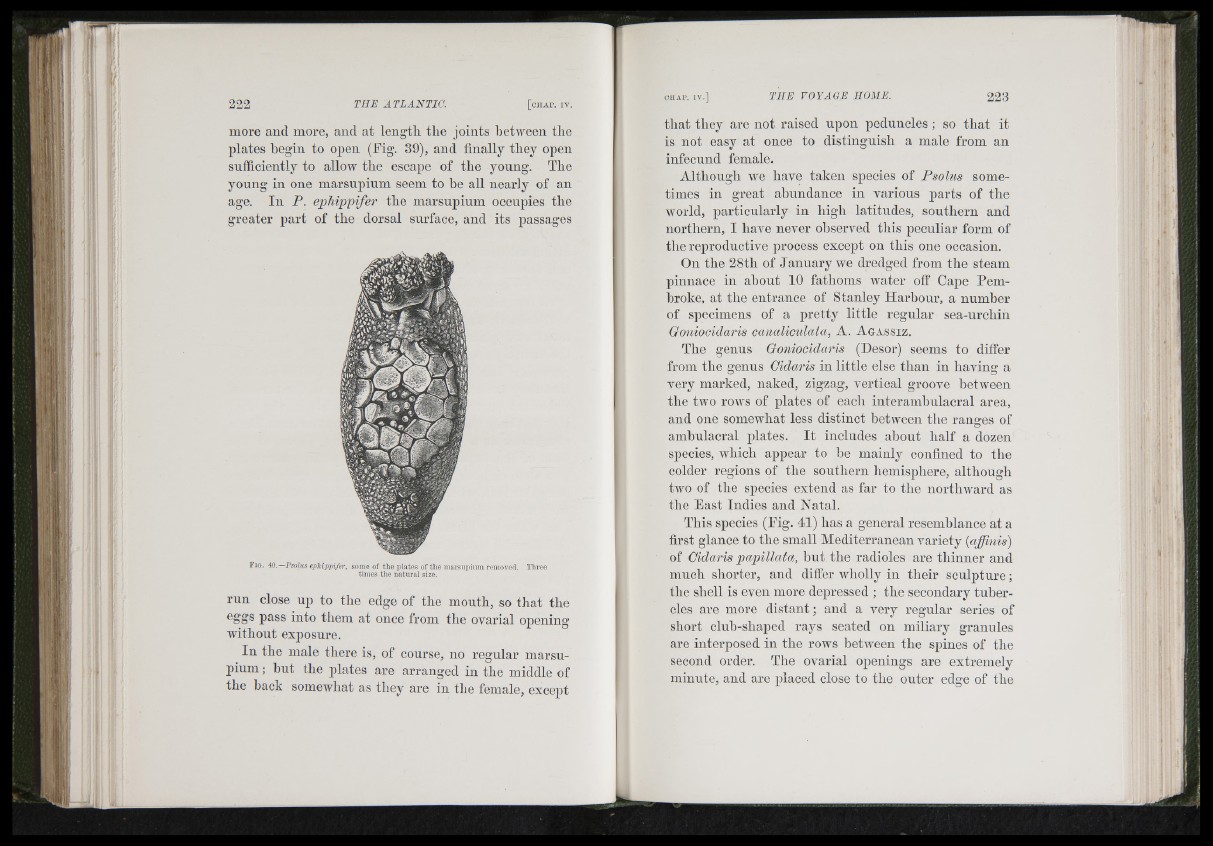
iir Hsi/'
I !..
H '
hlU
!-:ü
P{,•
M
jill'
more and more, and at length the joints 1)etween tlie
plates hegin to open (Fig. 39), and finally they open
sufficiently to allow the escape of the yonng. The
yonng in one marsupium seem to be all nearly of an
age. In P. ephippifer the marsupium occupies the
greater part of the dorsal surface, and its passages
F io . W .—Psohis ep h ip p ife r, som e o f th e p la te s of th e m a rsu p ium removed. Tliree
tim e s th e n a tu r a l size.
run close up to the edge of the mouth, so that the
eggs jjass into them at once from the ovarial opening
without exposure.
In the male there is, of course, no regular marsupium
; but the plates are arranged in the middle of
the hack somewhat as they are in the female, except
that they are not raised upon peduncles ; so that it
is not easy at once to distinguish a male from an
infecund female.
Although we have taken species of Psolus sometimes
in great ahundance in various parts of the
Avorld, particularly in high latitudes, southern and
northern, I have never observed this peculiar form of
the reproductive process except on this one occasion.
On the 28th of January we dredged from the steam
pinnace in about 10 fathoms water off Cape Pembroke,
at the entrance of Stanley Harbour, a number
of specimens of a pretty little regular sea-urchiii
Gonioeidaris eanalieulala, A . A g a s s i z .
The genus Gonioeidaids (Desor) seems to differ
from the genus Cidmds in little else than in having a
very marked, naked, zigzag, vertical groove between
the two rou's of plates of each interamhulacral area,
and one somewhat less distinct between the ranges of
amhulacral plates. It includes ahout half a dozen
species, which appear to be mainly confined to the
colder regions of the southern hemisphere, although
two of the species extend as far to the northward as
the East Indies and Natal.
This species (Eig. 41) has a general resemblance at a
first glance to the small Mediterranean variety {affinis)
of Cidaris papillala, but the radióles are thinner and
much shorter, and differ wholly in their sculpture;
the shell is even more depressed ; the secondary tubercles
are more distant; and a very regular series of
short club-shaped rays seated on miliary granules
are interposed in the rows betiveen the spines of the
second order. The ovarial openings are extremely
minute, and are placed close to the outer edge of the